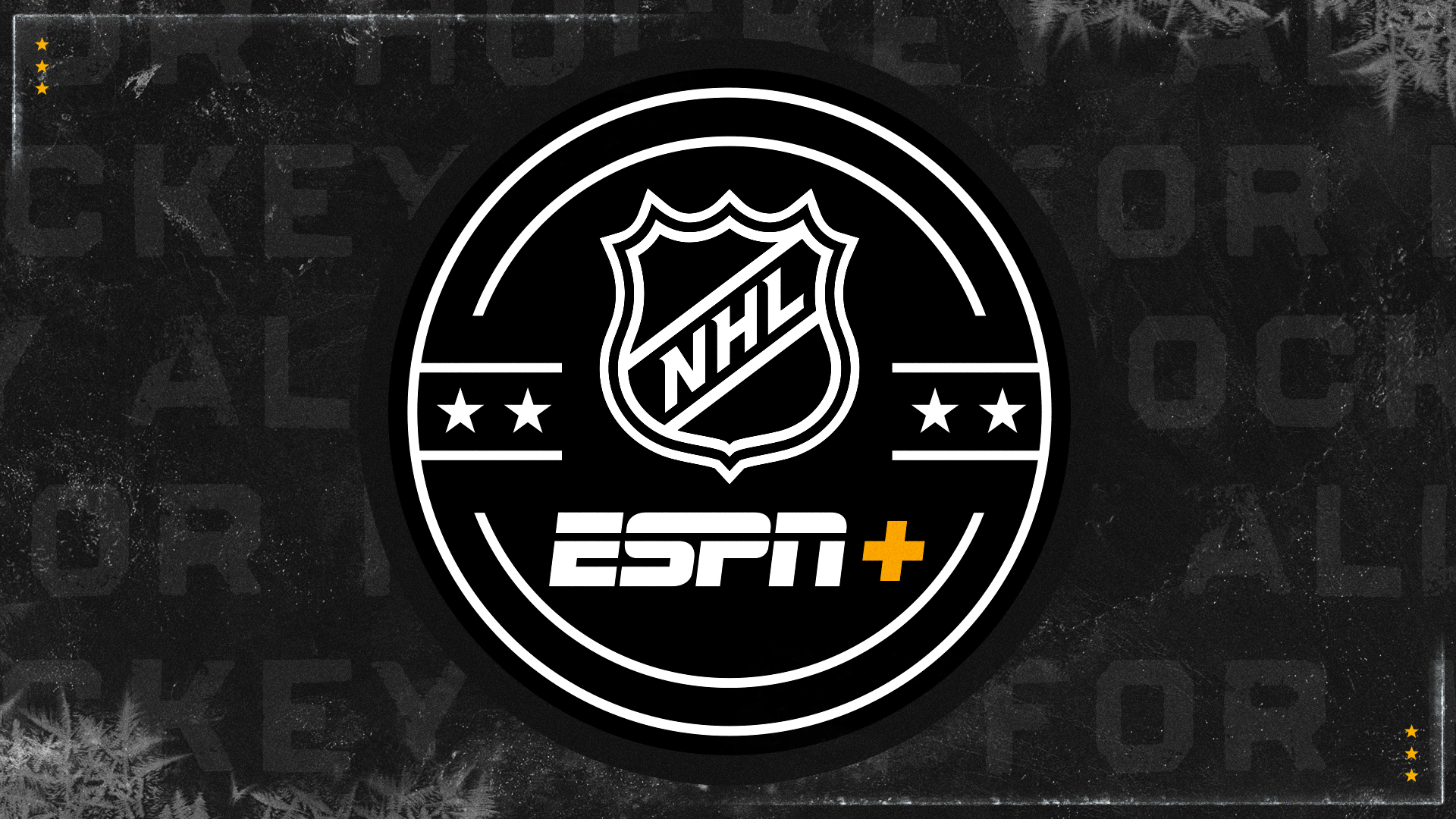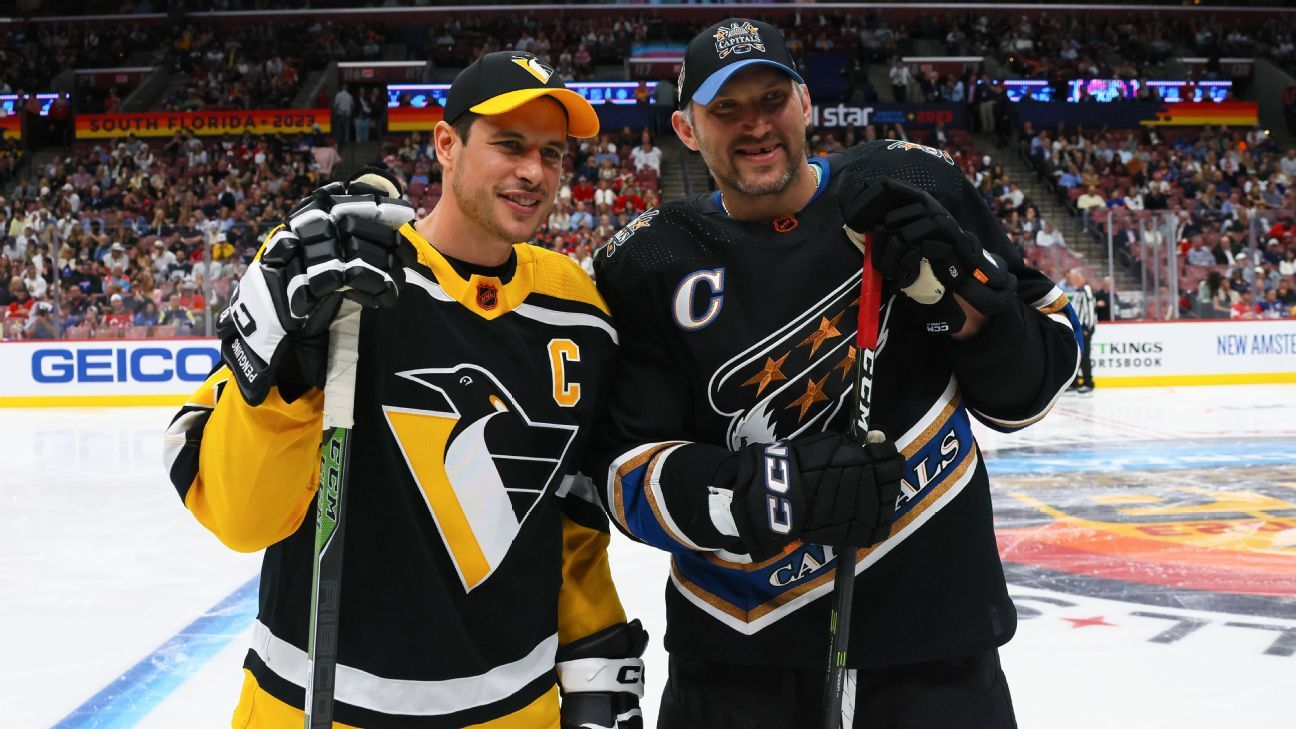
The NHL announced on Tuesday that Fanatics, its longtime e-commerce and fan apparel partner, will
This season will include 103 exclusive regular-season games across ESPN, ESPN+, Hulu and ABC. More than 1,000 out-of-market games will be available to ESPN+ subscribers via NHL Power Play on ESPN+.
• How to watch
• Subscribe to ESPN+
• Stream the NHL on ESPN
Nike is the “official outfitter” of Major League Baseball, but Fanatics has made MLB’s Nike-branded uniforms for all 30 teams since 2017, when it acquired Majestic. Fanatics also makes authentic NFL jerseys that also carry a Nike logo, which are sold online and in retail stores.
“The Fanatics brand is fairly well-known to fans, but we’re often thought of as more of an e-commerce company,” Mack said. “This isn’t the first time we’ve done performance product, but this will be the most visible we’ve ever been in making that performance product.”
Mack said that Fanatics will use that MLB experience and apply it to hockey. “We build on what’s working today, and then we bring in resources and thinking to bring new innovation,” he said.
For example, they’ll use the same factory based in Saint-Hyacinthe, Quebec, that Adidas did to produce its jerseys. Mack says Fanatics is also relying on past experience on the personnel side. Keith Leach, currently Fanatics Brands NHL VP/GM, will be the head of the authentic jersey project, having previously worked on game-worn gear with CCM, Reebok and Adidas. Jennings said Leach will “keep the trains on the right track from a supply chain perspective.”
Dom Fillion, its creative lead, served on the on-ice jersey design teams for Reebok and Adidas. He was the initial designer at Adidas when those jerseys launched.
“I understand there may be, initially, some trepidation [from fans], but I do have a lot of confidence in the team at Fanatics,” Jennings said. “I look back at the history with our locker room, at what they’re doing with other leagues, and I do think that they will be able to do this.”
Was there any concern about the same company providing authentic and replica jerseys in addition to the majority of the NHL’s other apparel?
Putting all of their jersey eggs in the Fanatics basket would seem to run counter to what the NHL did in its most recent U.S. media rights deal: Getting away from a monolithic setup to spread the wealth among multiple networks.
Jennings pushed back on that notion, saying the NHL doesn’t “want to have a monolithic model” in retail and that he doesn’t believe the Fanatics deal provides one.
Jennings said while Fanatics will be the “workhorse” for NHL merchandise and gear, there will always be “tastemaker” brands that are creating other retail items. He cited collections from Erin Andrews and 47 Brand as examples of other partners making NHL-related merchandise.
“No one company can do every product category and do it incredibly well,” he said.
Mack says the deal indicates that the NHL values Fanatics’ work over the years.
“The NHL went through the logical steps with us for us to show what we can do,” Mack said. “The NHL has made bets on us in the past, we’ve delivered on those bets, and this was a natural place to go next.”
Will NHL jerseys look radically different in 2024-25?
Not according to the NHL and Fanatics. One of the reasons Fanatics will use that factory in Saint-Hyacinthe is so the jerseys have little variation from what they are today. The specs for the jerseys will be exactly the same. While there will be differences in some of the fabrics and materials, “it will be almost indiscernible” to the jerseys currently in use, according to Jennings.
Mack said it’s important to take time and get the players’ feedback on the uniforms before doing anything to alter them.
“We’re very optimistic about the players’ reaction to what we bring to market in 2024-25,” he said. “We’ve been successful because we don’t just change for change’s sake. We look at what’s working well today.”
What about NHL logo redesigns?
Teams have been known to do a total rebrand when a new gear-maker signs on with the NHL. When Reebok made its debut, teams like the San Jose Sharks, Washington Capitals and Vancouver Canucks took the opportunity to remake their kits.
Typically, teams inform the NHL around April that they’re thinking about doing a jersey or logo change for the following season. Many of them aren’t acted upon: Either a team gets second thoughts or it goes through the design process and doesn’t find a good alternative.
That design process can be an intense and lengthy one, which is why the NHL will ask teams to put a hold on uniform overhauls for the time being. Jennings said that outside of anniversary jerseys that have to be produced in a timely manner, teams will likely hold off on any major redesigns until after Fanatics is “up and running” as the official uniform maker.
“You’ll probably see minimal changes. We’ll ask the teams for their cooperation in that,” he said. “We want to make sure that we’re delivering a high-quality product and not have any types of delays. Designing or redesigning a uniform is where a lot of times the biggest delays happen.”
What happens to Adidas specialty jerseys, like the Reverse Retro collection?
Jennings said the NHL owns any jersey design that ever gets worn on the league’s ice surface. That has been part of every deal they’ve made with a gear maker. Adidas doesn’t have providence over any of the jerseys it helped create.
Does that mean we’ll see more Reverse Retro jerseys? The two collections of that brand extension were incredibly popular among fans. But Jennings said those jerseys were made in the spirit of “limited drops or a scarcity model,” meaning we shouldn’t expect to see these particular versions of those jerseys for quite some time.
“Maybe in the future we go back into the vault and reexamine them,” he said.
In fact, Jennings said that the NHL would have ended the Reverse Retro program had Adidas reupped with the league. “Reverse Retro was incredibly successful for two years. But I wouldn’t have gone back and done Reverse Retro 3.0. I think it had done its thing,” he said.
Instead, the NHL has challenged Fanatics to carve its own path. It may not be apparent in the first two seasons of their 10-year deal, but Jennings said that the 2026-27 season is where fans might start to see “the innovation and technology story that we want to tell with the jersey.”
What might happen in 2026-27?
Jennings mentioned that season as the earliest target for significant changes to the NHL sweater. In particular, there could be changes to what materials are used in game sweaters, including the exploration of lighter fabric options for the jersey and logo crest.
“There are always these quantum leaps in performance fabrics and materials,” he said.
There are other areas of focus for Fanatics and the NHL, including player safety. Jennings said they will explore how to better guard players from accidental skate lacerations, potentially with added protection built into the sleeves or socks.
There also have been discussions within the NHL about enhancements that could be made to jerseys that are unique to certain positions, be it a forward, defenseman or goaltender.
“The development, the testing of it, the reinforcement of it, that all takes some time,” Jennings said.
What do the next several months look like for Fanatics and the NHL?
Fanatics and the NHL will immediately begin working with all 32 teams, their equipment managers and players to create a seamless transition of these new product rights as they approach the 2024-25 season.
The next year will be one with plenty of information gathering from players and teams.
“We’re going to say, ‘This is the baseline,’ and figure out what’s working and what could be better,” Mack said. “How could the athletes feel better when performing in this product? And then we’ll go through multiple generations of updates. It’s not an overnight dramatic change just to make a splash.”
Jennings said marketing meetings will begin soon for not only the 2024-25 season, but also the seasons that follow.
“If you think the changes in retail were dramatic over the last five years, they’re going to be even that much more dramatic in the next 10 years,” he said. “And Fanatics, driven by Michael Rubin and his senor team, are definitely visionaries.”
Could this lead to Fanatics taking over more in-arena stores?
Currently, Fanatics operates onsite retail stores for the New Jersey Devils and the Capitals. They wouldn’t mind adding more arenas to the fold.
“What’s actually really exciting about this vertically integrated relationship is the innovation you can bring,” Mack said. “We have the ability to make championship products in the certain arenas that we run.”
Such as 2018, after the Capitals won the Stanley Cup: Fanatics had the rights to make championship products. Washington fans attending their watch party in D.C. could buy Capitals Stanley Cup gear immediately after they won the championship in Las Vegas. During the Caps’ Cup run, the D.C. retail stores were able to replenish their stock quicker because they also made the apparel.
“We certainly would love to service any NHL team that wants it, but it goes team by team,” Mack said. “This is not a league decision. The team decides who operates in their arena. We feel that because of the vertical rights, our ability to provide the best fan experience in the arena is unrivaled.”












